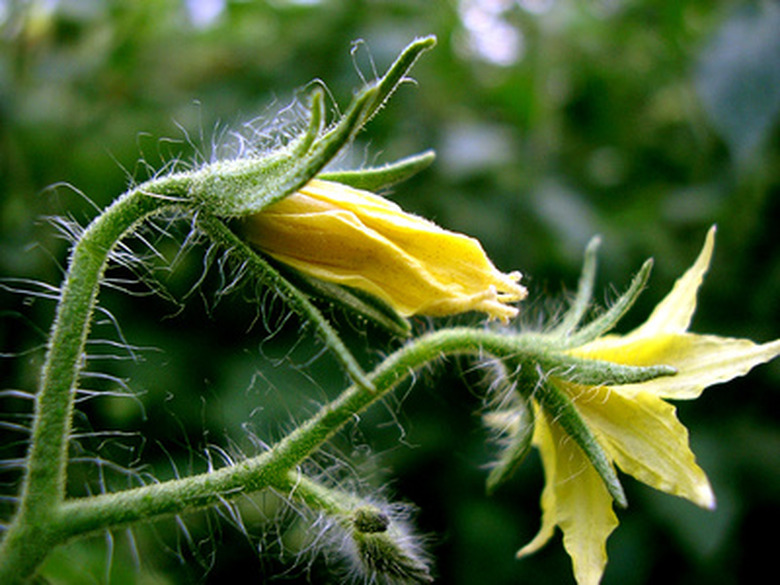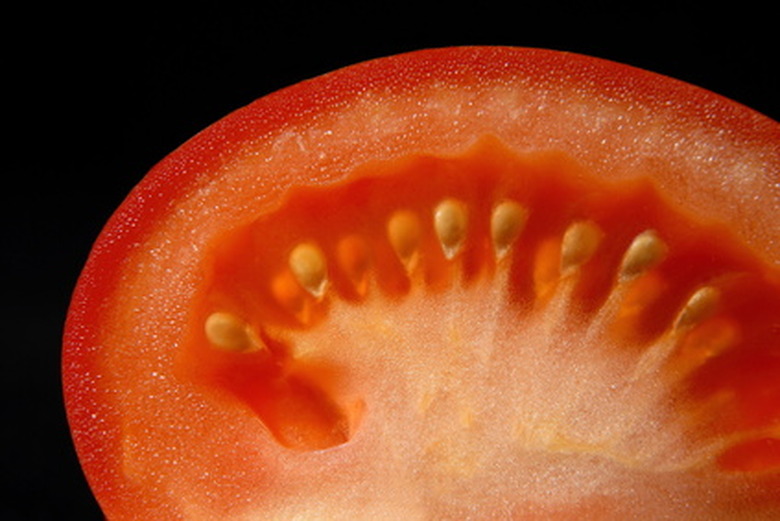Anatomy Of A Tomato Plant Flower
Tomato plants produce flowers that are both complete (containing all four basic layers) and perfect (having both male and female reproductive parts). The flowers are generally less than an inch in diameter and, according to Thomas Rost, in a 1996 University of California Davis publication, can be arranged on a stem in three ways. "Simple flowers can appear as well as simple cymes and branched cymes. The number of flowers that occur in an inflorescence is dependent upon environmental factors such as temperature."
Sepals
The sepals of a tomato flower are the outermost structures that enclose the flower and protect it before it opens. Together, the group of sepals is called a calyx. They are connected to a stem part known as the peticel, and support the rest of the flower.
- Tomato plants produce flowers that are both complete (containing all four basic layers) and perfect (having both male and female reproductive parts).
- The sepals of a tomato flower are the outermost structures that enclose the flower and protect it before it opens.
Petals
Petals are the yellow flaps that contain the reproductive parts of the tomato flower, and recruit bees and birds to become pollinators. As a whole, the petals make up the corolla.
Stamens
The general term for the male reproductive part of a flowering plant is the stamen. The filament, or "stalk," of the stamen stands vertical inside the flower petals. Atop the filament sits the anther, which is responsible for making pollen. In the case of tomato flowers, several stamens are connected and enclose the female reproductive parts.
Carpels
The pistil is the female reproductive structure of a flowering plant. In tomato plants, this green formation can be thought of as a collection of several separate parts knows as carpels, which each contain three parts: The tip of the pistil is called the stigma. The vertical stalk that holds the stigma is the style. The base of the carpal encloses ovaries, or eggs.
- Petals are the yellow flaps that contain the reproductive parts of the tomato flower, and recruit bees and birds to become pollinators.
- In tomato plants, this green formation can be thought of as a collection of several separate parts knows as carpels, which each contain three parts: The tip of the pistil is called the stigma.
Fertilization
Having both male and female parts, tomato plants can pollinate themselves. While cross-pollination is common, normally pollen from the anther of one flower is transferred to the stigma of the same flower. The pollen grain then extends down inside the style to form a tube, which then carries two sperm cells down to one of the ovules. Once fertilized, the ovule becomes one of the seeds of the tomato fruit.

